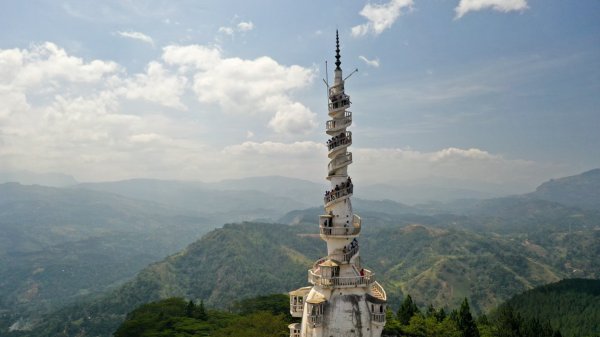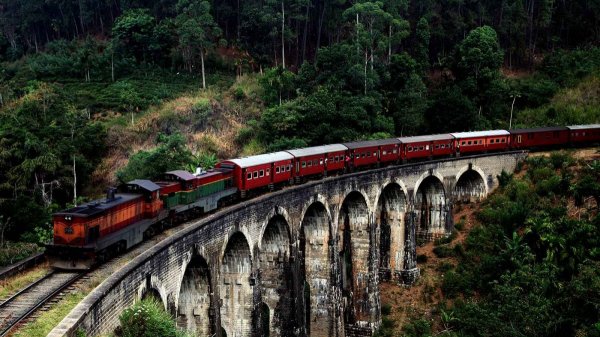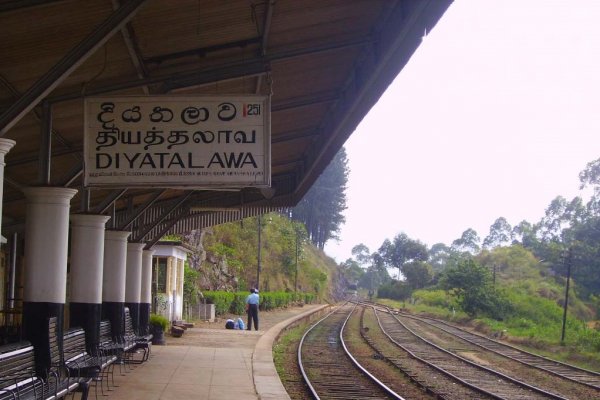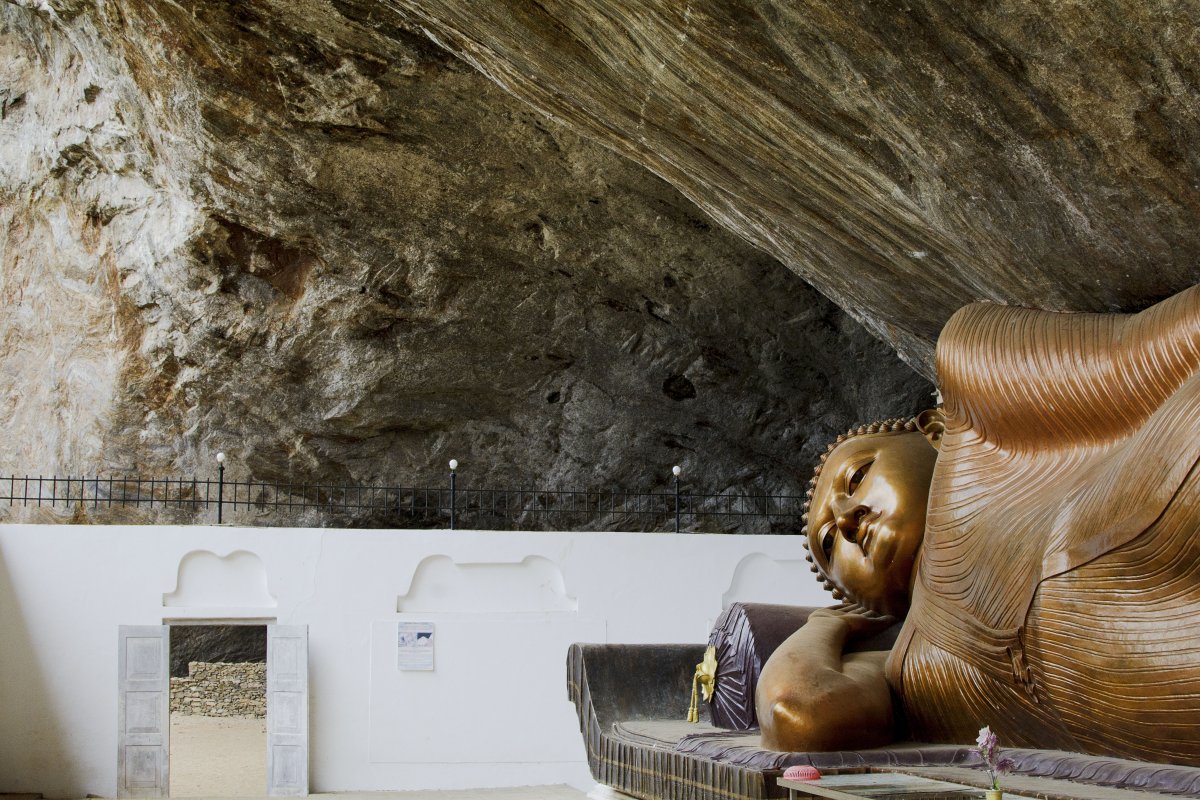
All photos by Roar Media/Thiva Arunagirinathan
Pahiyangala Cave packs a punch: physically and emotionally.
As supposedly the largest natural rock in South Asia, Pahiyangala Cave is an awesome sight from a distance, and fiercely imposing to anyone who approaches.
The cave is the site of the oldest archaeological remains found in South Asia.
Human fossilized skeletal remains were discovered in the cave’s sediments during excavations in the 1960s, the 1980s, and in 2013.
When standing in the cave, the thought of early man finding shelter there has the power to stir genuine emotion. The enormous cave is at once cavernous and cosy, and although vast, it protects the visitor from the volatility of the tropical weather and the wild jungle below.
Roar Media visited Pahiyangala Cave to investigate the social anthropology behind the archeology.
What we found was a much graver story of modern times…
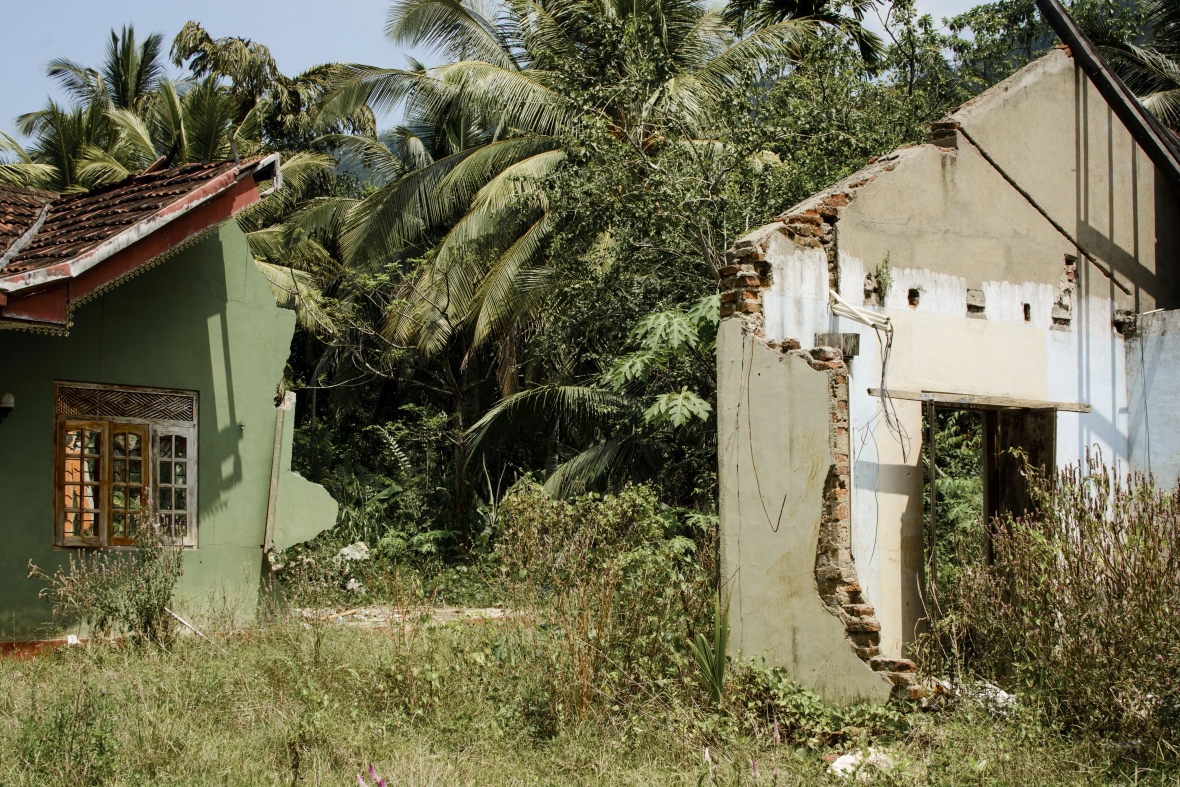
Pahiyangala and the remote surrounding area was one of the worst-affected regions of the Kalutara District flooding of May-June 2017. Broken houses like these are dotted along the roadside. Following this disaster, the region was visited by the army and placed under supervision as devastating landslides were not unexpected.
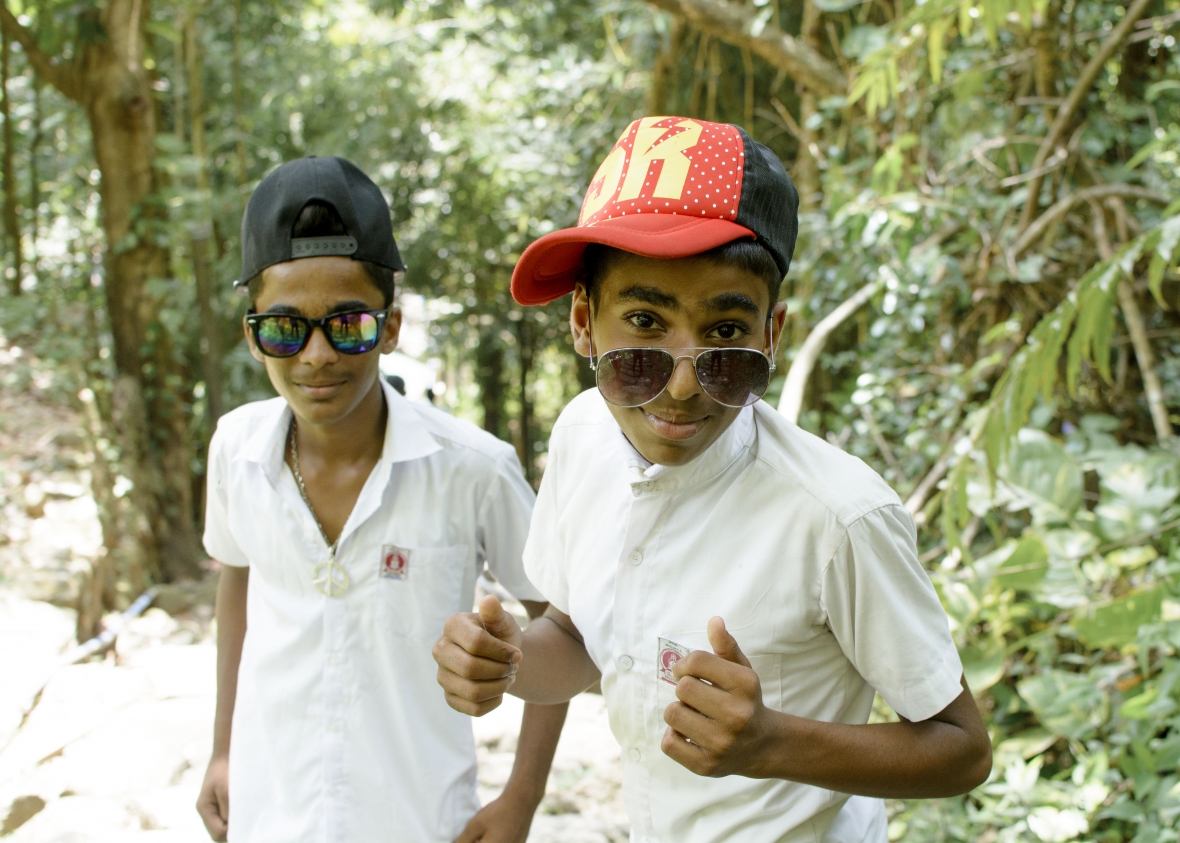
Ascending the hundreds of steps to the cave, boys on a school trip had accessorized their school uniforms.

A monk’s abode is built into the outside wall of the cave. A robe was hanging up and cooking utensils remained, but the monk did not seem to be there.
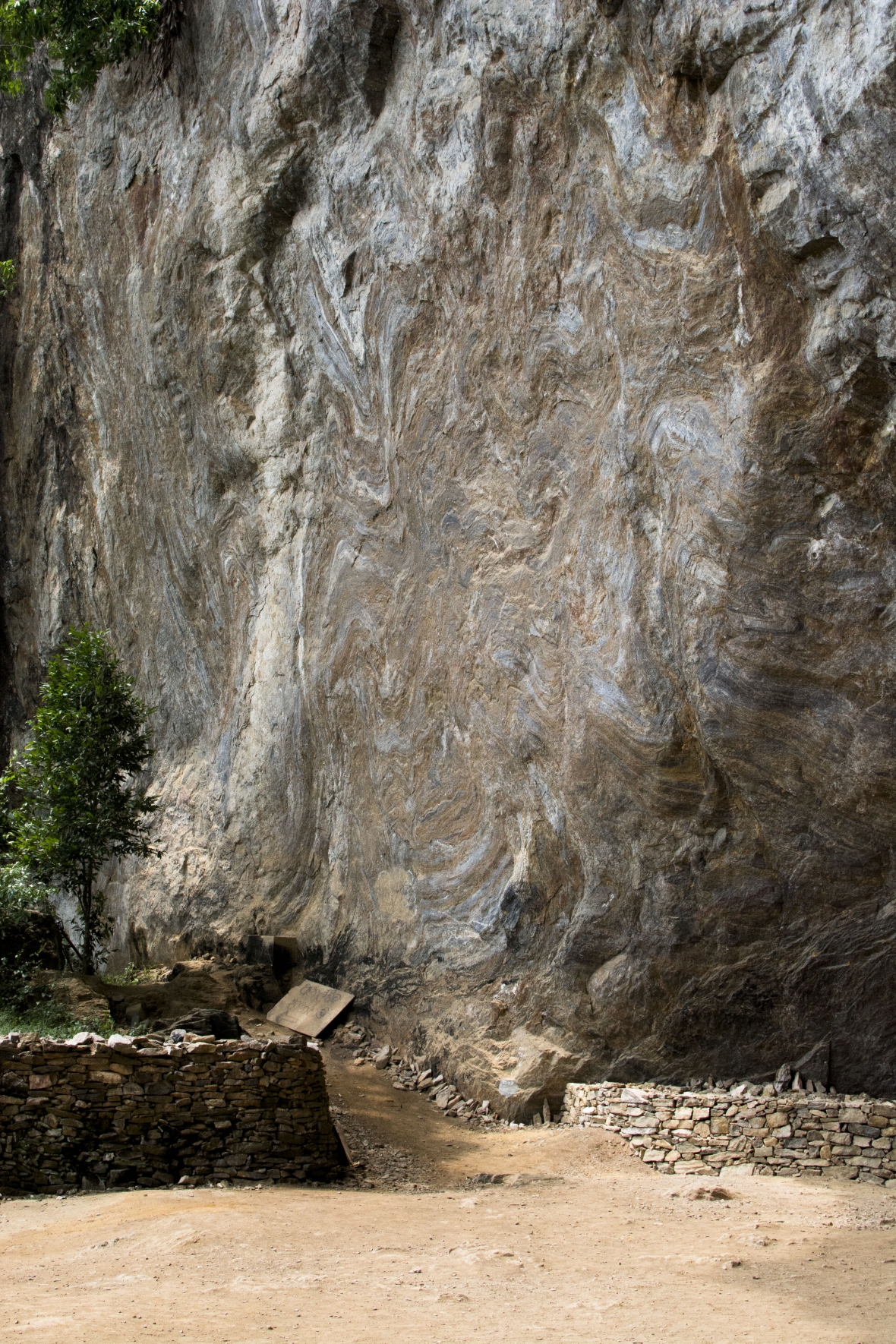
The rock’s psychedelic exterior created through hundreds of thousands of years of water erosion is truly beautiful.
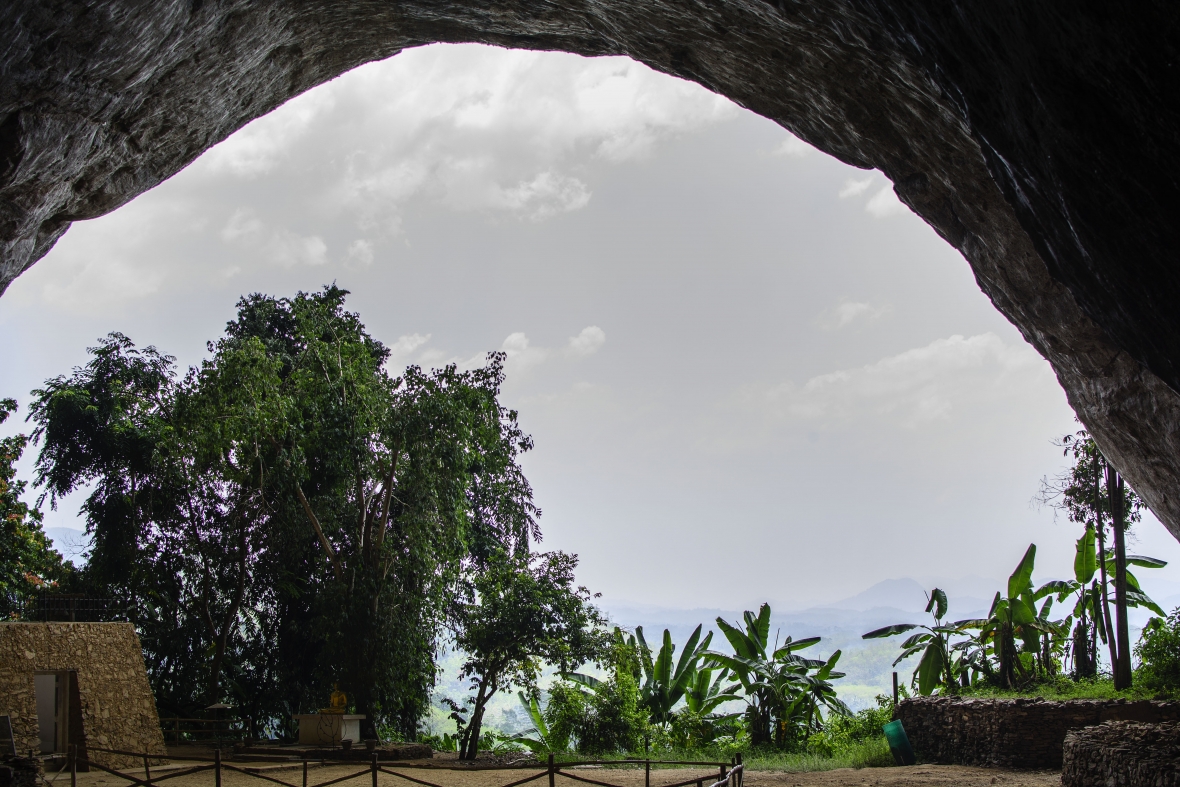
The cave is 175 feet high and 200 feet deep. Villagers say that 3,000 people can visit at a time to pray and reflect.

A reclining Buddha fills one side of the cave complex. Pahiyangala cave is otherwise known as “Fa-Hein” cave. Although no archaeological evidence supports this legend, the name derives from a Chinese Mahayana Buddhist priest ”Fa- Hsien” who visited the cave in the 5th century. He was on his way to Sri Pada (Adam’s Peak) and the cave provided a resting spot along the way.
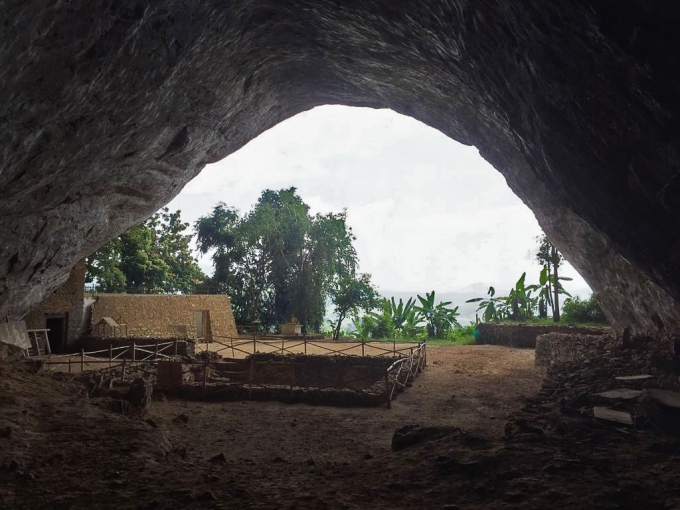
A view from the back of the cave. The ongoing archaeological dig is pitched out in the foreground where five human skulls were excavated back in 1968. Following subsequent digs and modern digital analysis, the bones were identified as being 33,000-37,000 years old. The oldest found in South Asia.

Alongside the human bones, the Sri Lanka Archaeological Department also found what is believed to be hunting weapons made from stones and animal bones. Fossils in the cave also suggest that the ancient dwellers in the cave also ate edible snails and used their shells for decorative purposes such as jewelry.

A painting of Pahiyangala Manawakaya (Pahiyangala Man) sits alongside the archaeological site. Biologically, the Pahiyangala Man had a short vertebral structure, wide jaw bones, a large palette and big grinding teeth.
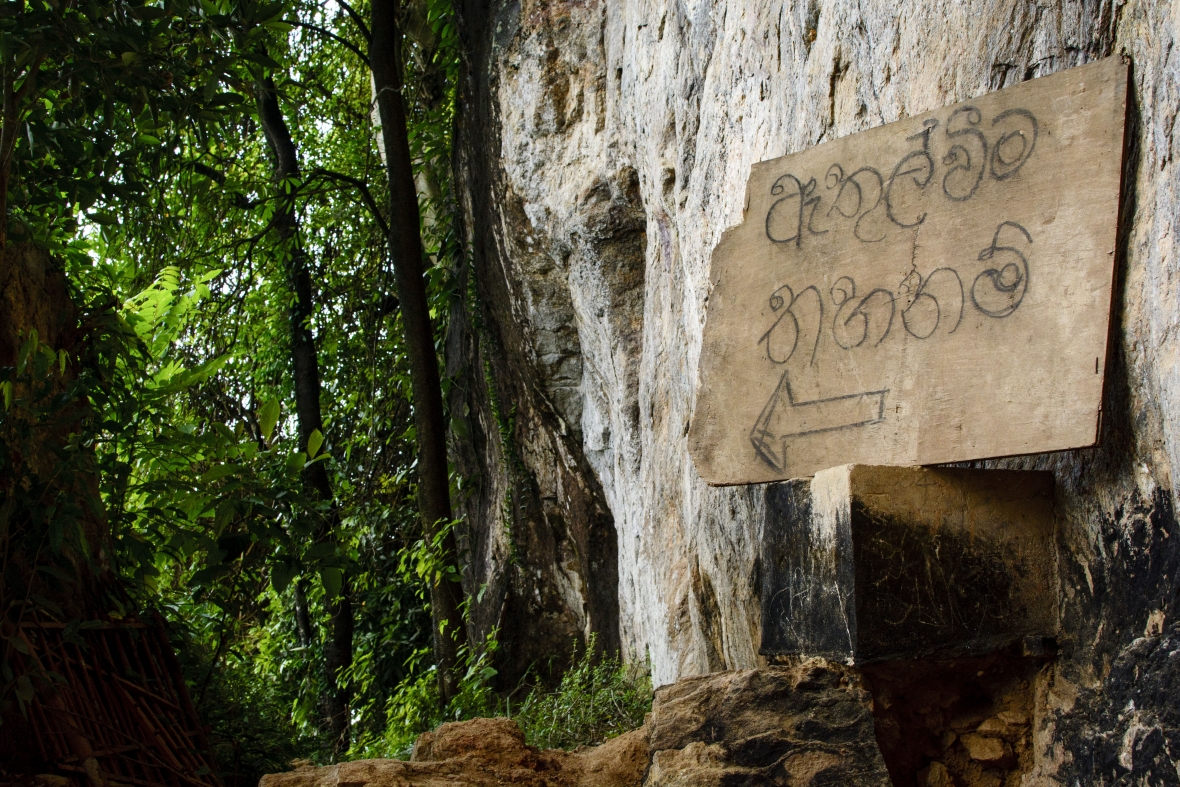
The sign says “You can’t enter” in Sinhala. This onomous message meant Roar Media couldn’t venture up the mountainside to visit the ancient temple on top. We did trek beyond this point out of curiosity, but the uneven ground quickly made us retreat. At the base we asked a tuk tuk driver why was the sign in place, and he said there had been a terrible landslide on the other side of the rock only two months ago and it is very dangerous.
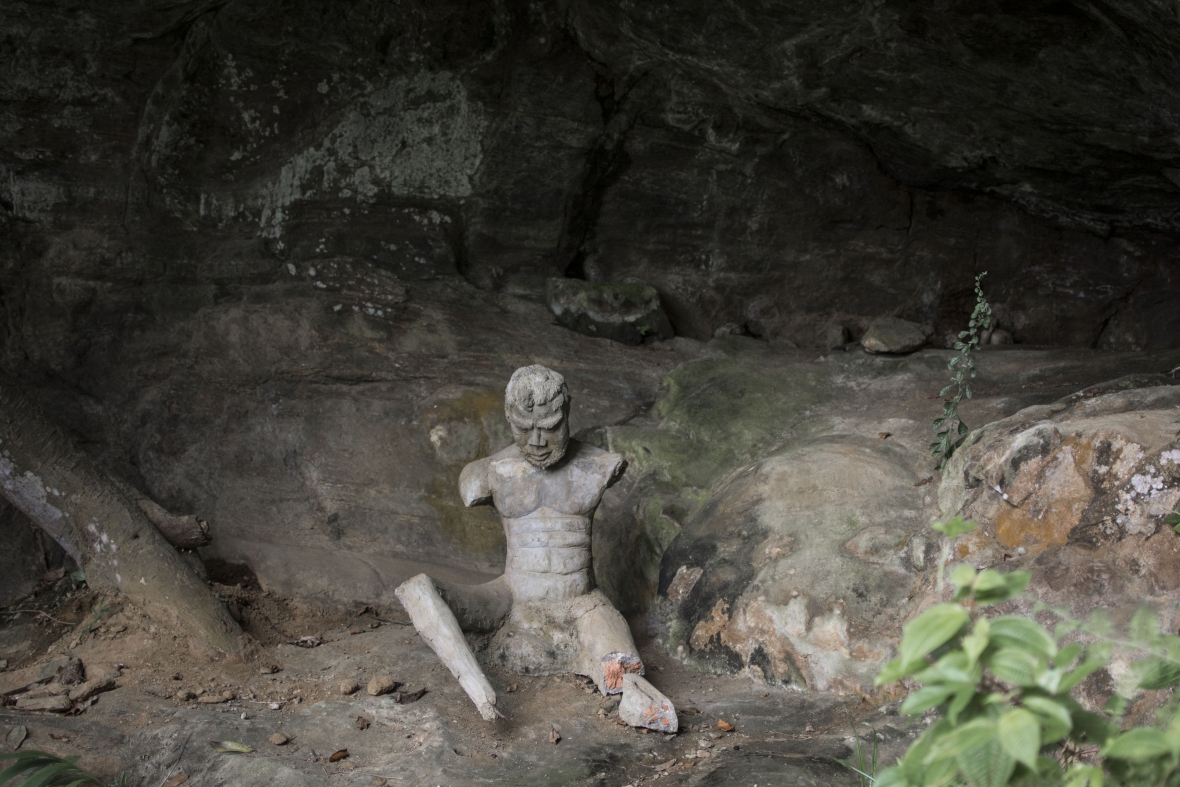
This eerie broken statue was the first thing Roar Media saw after the “Do Not Go This Way” sign. Turning back seemed the most sensible option.
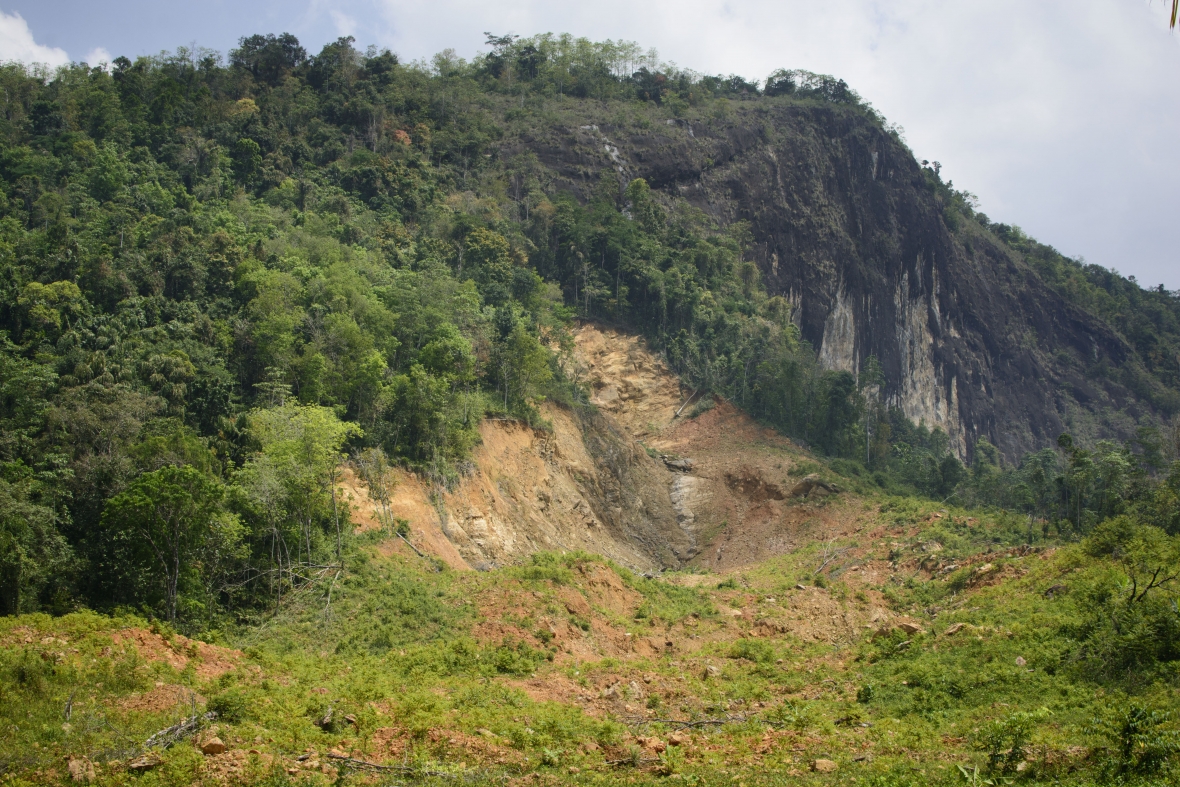
From around the rockside, the crater left from the massive landslide that fell in December 2017 is clearly visible.

Roar Media met a villager who lived close by who spoke of his memory of the landslide. He said at around 2am after heavy rain, the whole ground started shaking. In the morning when they ventured outside, they were surrounded by rock and debris 100 feet high. Seven houses were buried and 23 people were missing. The man was visibly traumatized.

A closer look at the landslide debris. The villager said that homes and people were buried beneath.
